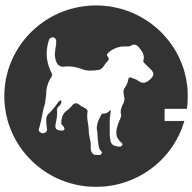Because of its land pattern, Rwanda is called the country of Thousand Hills.
It is one of the smallest countries on the African continent, with just over 25,000 square kilometres in area, but has one of the highest population densities on the continent.
It has been 25 years since the 6th of April, 1994, the day of the bombing of the plane carrying the presidents of Rwanda, Juvenal Habyarimana, and Burundi, Cyprien Ntaryamira.
From that moment and for 100 days on those same hills, the terrible Genocide of the ethnic Tutsi, supported by the ethnic Hutu paramilitary groups, Interahamwe (in the Kinyarwanda language means those who work together) and Impuzamugambi (those who have the same goal), armed with firearms, machetes and spiked sticks, took place. The violence spread exceptionally quickly across the nation, coordinated by Radio Télévision Libre des Milles Collines broadcasts calling for the “cockroaches” to be crushed and suggesting their hiding places.
The militias killed about 800,000 (Rwandan sources speak of one million) Tutsis and moderate Hutus. In July, the Rwandan Patriotic Front (RPF) backed by the Tutsis of the Ugandan diaspora and led by Paul Kagame, the country’s current president, took control of the nation.
The Rwandan crisis cost millions of lives, about 70 percent of the Tutsi ethnic group and 20 percent of the total population, and caused two million refugees outside Rwanda and about 1.5 million people displaced in the country itself.

The post-genocide in Rwanda
The first post-genocide severe emergency was the issue of the thousands of accused still awaiting trial. The government of Rwanda has restored the traditional Gacaca—judicial system based on community juries. During trials, courts impose milder sentences in cases where the accused showed repentance and asked for forgiveness from their community, giving victims a chance to learn the truth about their family members’ deaths.
This situation fully represents the uniqueness of the Rwandan case, a new coexistence between victim and perpetrator based on forgiveness and national rather than ethnic identity and reconciliation. The leadership of President Paul Kagame, in office since 2000, has facilitated this process, promulgating a new constitution based on equal rights and rejecting the extreme ideology on which the Hutu Power movement was founded.
On the other hand, however, the Kagame government has come under a lot of criticism for the lack of freedom of speech left to opponents and the rigidity of the democratic system (in 2017, he won the election with 98 per cent preference by changing the constitution to be re-elected for a third consecutive term).
Although the economy has been growing since 2000-an average of 8 per cent per year-Rwanda remains a fragile country. Much of the population, especially in rural areas, still live below the poverty line. The challenge of the Kigali government, promoter of the project Vision2020, is to change the production system linked to agriculture into an economy based on technical knowledge and built to provide services, becoming a middle-income country by 2020.
Refugees
An additional pressing emergency is that of refugees. Returning from the diaspora of the last century or fleeing conflicts in confined countries, refugees are housed in camps or villages built by the government on uncultivated or unproductive land.
In Nyagatare district, where many shelter villages have been built, the population in 2002 was 8,500, while in 2012, the number rose to 52,000. Today, the perception of Rwanda is that of a stable and safe country. The government has also implemented a significant cut in bureaucracy and improvement of administration, being very tough on the phenomenon of corruption of embezzlement, and this favours enterprise and investment from abroad. So much so that for many, Rwanda is referred to as the Switzerland of Africa, especially after hosting the World Economic Forum in Africa in 2016, just as it did in Davos.
A SONG FROM RWANDA
In April 1994, members of the Hutu power killed at least 800,000 Tutsis and moderate Hutus in a carefully organised 100-day genocide programme. The genocide spread throughout the country with astounding speed and brutality. Townspeople were incited to take up arms against their neighbours. The genocide and massacre of Rwandans ended when the Rwandan Patriotic Front took control of the country in July 1994. An estimated 2,000,000 Rwandans, mostly Hutus, have been displaced and become refugees


